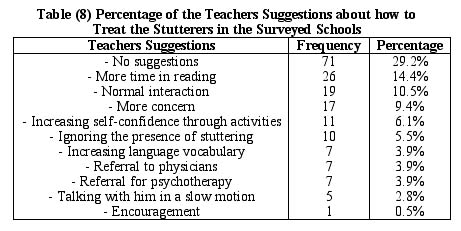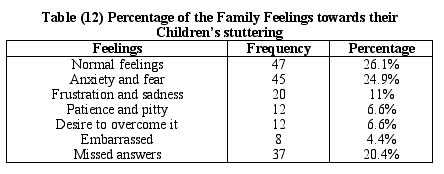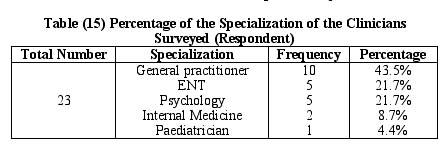Stuttering in Sudan and New Hopes for the Persons Who Stutter (PWS): Survey Study in Khartoum State Primary Schools
 |
About the presenter: Sami Awad Yasin, Ph.D. from Khartoum, Sudan, Africa, is a clinical psychologist and a member of the Sudanese Psychological Society.and the International Fluency Association (IFA). He is a Staff Counselor at the Staff Counseling and Welfare Section, U N MISSION, and also the Founder & Director of the Sudanese Stuttering Organization (SUDASO). Emails: samiyasin2@yahoo.com or yassins@un.org and Telephone (cell): 00249 9121 45915 |
Stuttering in Sudan and new Hopes for the Persons Who Stutter (PWS): Survey Study in Khartoum State Primary Schools
by Sami Awad Yasin
from Khartoum, Sudan, Africa
Introduction:
Sudan is an Arab-African country, with population nearly about 35 millions, Khartoum is the capital of Sudan where Blue and White Niles meet, Islam and Christianity are the main religions in Sudan.
A group of psychologists lead by the researcher established the Sudanese Stuttering Organization (SUDASO) in August 2005, Aiming at:
- Providing counselling and therapeutic services for people who stutter and their families,
- Train cadres to work/help PWS and their families,
- Raise the public awareness about stuttering,
- Research, Survey and Participate in local, regional, international conferences and gatherings about stuttering.
A survey was conducted in July 2005 of 65 primary schools in Khartoum state. The results are provided on the tables below.
FIRST: The results obtained from schools and families questionnaires:
(a) Teachers & Students who stutter:








(b) Families of the Stuttered Children:






SECOND: The Results Obtained from Clinical Specialists Questionnaire:




Recommendations:
1. There is a strong need for a specialized center to PWS and cadres working with them with the new and advanced methods of stuttering therapy.
2. There is a strong need to raise the awareness of school teachers about stuttering and how to provide help.
3. More studies in large scales to cover all educational and society levels about stuttering and its impact on PWS.
4. Specialized and advanced training courses for clinicians about stuttering and its treatment.
After conducting a the preliminary research in Khartoum primary schools, the researcher designed an intervention program containing mainly the following:
- Part one: Direct Intervention Program with the Stutterer: Depends mainly on The Valsalva Hypothesis and Mechanism as formulated by William D. Parry (2002).. The program contains about 12 sessions aimed at training the PWS mainly on: to stutter on purpose, relaxing the rectum, abdominal breathing, control over abdomen and chest muscles, modification of body reactions to stress and words, phonation, change of attitudes and feelings, acknowledgement of stuttering.
- Part two: Family Counselling Program: About 10 sessions in which the parents/care givers learn about stuttering, their reactions and attitudes towards it, acknowledgement of stuttering and its impact on the child's personality growth, active listening to the stutterer, talking (with) and conversation management with the stutterer, the importance of keeping stable home living routine, and how family members should behave with the PWS.
The program implementation is preceded and followed by stuttering severity measurement and parents' reactions questionnaire.
The program started on the first week of August 2006, and it will take about 2 months duration for each group (the group usually contains about 10-15 participants - PWSs and their families, simultaneously but separately).
Reference:
William D. Parry: Understanding and Controlling Stuttering, Distributed in Cooperation with the National Stuttering Association, 2nd Edition (updated 2002), Aneheim Hills, California.
* Valsalva Mechanism as he defines it: is a neurologically coordinated combination of muscles in the larynx, mouth, chest, and abdomen. It's normal function is to assist us in exerting strenuous physical effort or in forcing things out of the body (as in defecation), however if we mistakenly activate the valsalva mechanism during our effort to speak, I believe it may cause a forceful blockage of airflow or an interference with phonation - two of the basic, underlying elements of stuttering.
August 15, 2006

